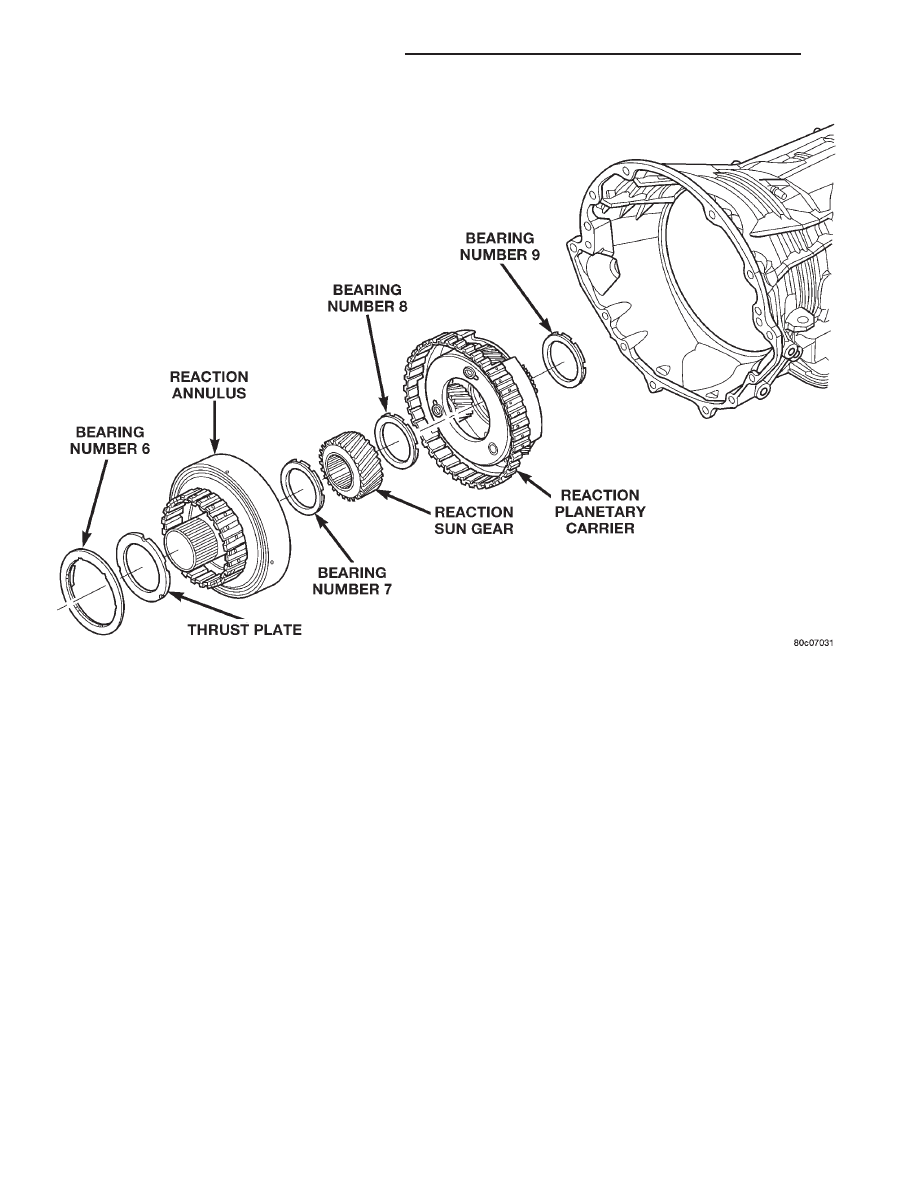Jeep Grand Cherokee WJ. Manual - part 454

PLANETARY GEARTRAIN
DESCRIPTION
The planetary geartrain is located behind the 4C
retainer/bulkhead, toward the rear of the transmis-
sion. The planetary geartrain consists of three pri-
mary assemblies:
• Reaction (Fig. 25).
• Reverse (Fig. 26).
• Input (Fig. 26).
OPERATION
REACTION PLANETARY GEARTRAIN
The reaction planetary carrier and reverse sun
gear of the reaction planetary geartrain are a single
component which is held by the 2C clutch when
required. The reaction annulus gear is a stand alone
component that can be driven by the reverse clutch
or held by the 4C clutch. The reaction sun gear is
driven by the overdrive clutch.
REVERSE PLANETARY GEARTRAIN
The reverse planetary geartrain is the middle of the
three planetary sets. The reverse planetary carrier can
be driven by the overdrive clutch as required. The
reverse planetary carrier is also splined to the input
annulus gear, which can be held by the low/reverse
clutch. The reverse planetary annulus, input planetary
carrier, and output shaft are all one piece.
INPUT PLANETARY GEARTRAIN
The
input
sun
gear
of
the
input
planetary
geartrain is driven by the underdrive clutch.
GEARSHIFT MECHANISM
DESCRIPTION
The gear shift mechanism provides six shift posi-
tions which are:
• Park (P)
• Reverse (R)
• Neutral (N)
• Drive (D)
• Manual second (2)
• Manual low (1)
Fig. 25 Reaction Planetary Geartrain
21 - 198
45RFE AUTOMATIC TRANSMISSION
WJ
DESCRIPTION AND OPERATION (Continued)